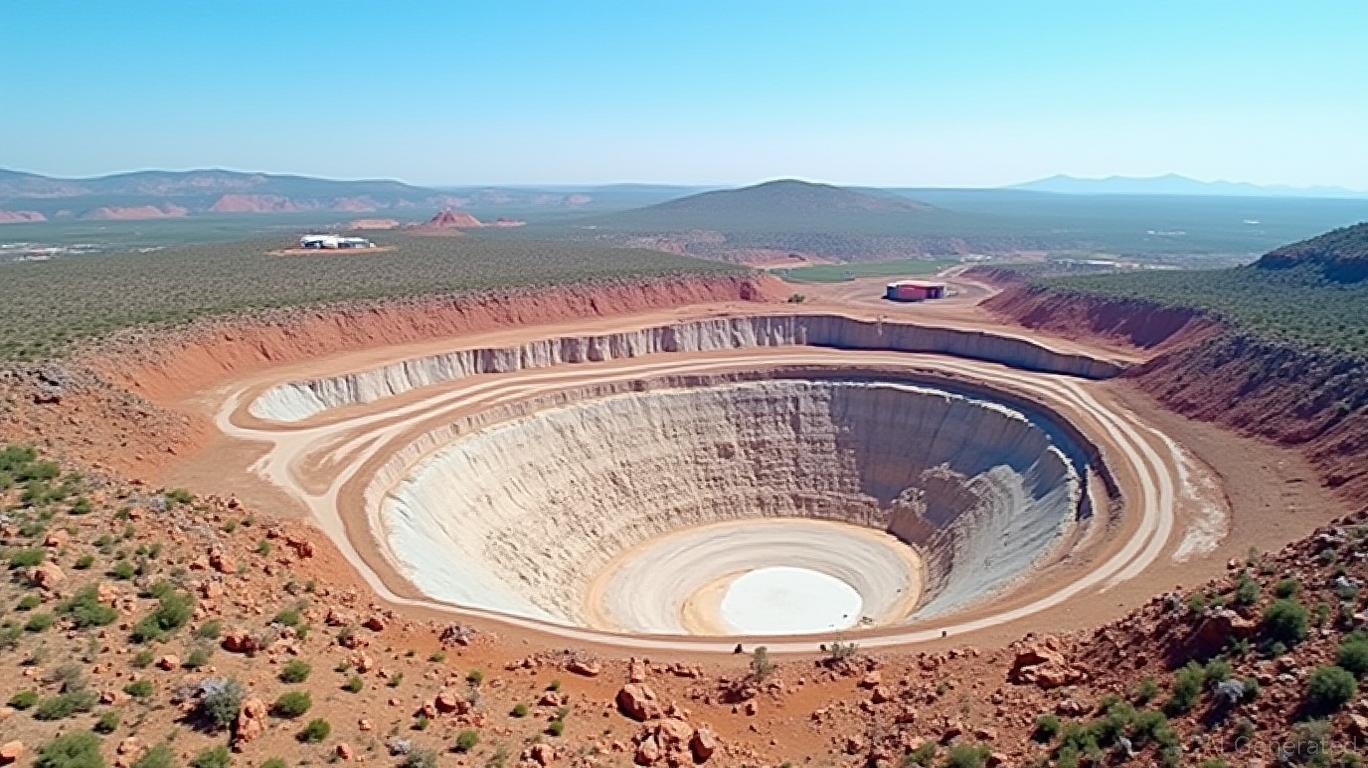Orla Mining's Camino Rojo: Unlocking Underground Potential for Long-Term Value Creation
The Camino Rojo gold-silver-zinc project in Mexico has emerged as a cornerstone of Orla Mining's (ORLM) growth strategy, offering a rare combination of scale, grade, and operational flexibility. With a robust underground resource estimate and a clear phased development plan, the project stands at the precipice of a transformative phase that could redefine Orla's valuation trajectory. Let's dissect its potential and the catalysts that could unlock shareholder value.
The Resource Base: A Foundation for Decades of Production
Orla's June 2025 resource update highlights Camino Rojo's scale and grade: 50.1 million tonnes of Measured & Indicated resources averaging 2.58 g/t AuEq, translating to 4.37 Moz AuEq. The inclusion of Zone 22—a high-grade, carbonate-hosted zone extending to 1,300 meters depth—adds strategic depth, with drilling ongoing to expand its boundaries. Crucially, the resource is distributed across three processing streams, each optimized for metallurgical efficiency:
- Heap Leach (3% of tonnage): Low-cost gold recovery (40-70%) for oxide material.
- CIL (25% of tonnage): High gold recovery (92%) for sulfide zones.
- POX-CIL (72% of tonnage): Enables zinc concentrate production alongside gold and silver recovery.

This stratified approach ensures that Camino Rojo can maximize metal recovery while minimizing costs. The zinc byproduct alone adds incremental value, with recoveries of 80% achievable through flotation—a key differentiator from typical gold projects.
Phased Development: De-Risking the Path to Underground Mining
Orla's strategy for Camino Rojo is methodical, designed to mitigate execution risk while advancing toward full-scale underground operations:
- 2025: Exploration & Permitting Milestones
- A 15,000-meter drilling program (11,000 meters completed) is testing Zone 22's down-plunge and depth potential. Results expected by Q3 2025 could expand inferred resources into the indicated category.
SEMARNAT permits for an underground portal and exploration drift (submitted in Nov 2024) are pending. If approved, construction could begin in 2026, enabling tighter-spaced drilling and Mineral Reserve definition.
2026: PEA & Metallurgical Validation
- The upcoming Preliminary Economic Assessment (PEA) will evaluate combining underground resources with the existing oxide open-pit operation. This hybrid model could reduce upfront capital by leveraging existing infrastructure.
Metallurgical testing by Blue Coast Research will refine flowsheets, particularly for Zone 22's cyanidation and flotation potential. Positive results here could validate higher recoveries and lower processing costs.
Long-Term: Full-Scale Underground Operations
- An exploration drift (decline) will access deeper sulfide zones, enabling a transition to underground-only production post-pit closure. Feasibility studies will follow the PEA, with permitting for full-scale operations likely by 2027.
Metallurgical Optimization: The Unsung Catalyst
While resource size and development plans grab headlines, metallurgical advancements are equally critical. Camino Rojo's carbonate-rich host rocks and multi-metallic nature present challenges—but also opportunities. The POX-CIL circuit, for instance, allows zinc recovery at 80%, which could add ~$100 million in annual byproduct credits at current zinc prices. Similarly, Zone 22's high gold recoveries via cyanidation (92%) reduce processing costs compared to refractory sulfides requiring POX. Success here could narrow the project's payback period and improve NPV.
Risks to Consider
- Permitting Delays: SEMARNAT approvals remain pending, and Mexico's regulatory environment is complex. A delay beyond 2026 could push back exploration timelines and increase costs.
- Metallurgical Variability: While test results are positive, commercial-scale processing could reveal unforeseen challenges. Zone 22's carbonate matrix may require tailored reagents or grind sizes.
- Commodity Price Sensitivity: Camino Rojo's economics hinge on gold (70% of AuEq), so a prolonged price dip below $1,800/oz could pressure NPV.
- Integration with Musselwhite: Orla's recent acquisition of the Musselwhite Mine in Canada has increased leverage to gold prices but also raised AISC (to $1,300–1,500/oz in 2025). Capital allocation between projects could strain resources.
Investment Thesis: Buy the Dip, Target the PEA
Orla's stock has underperformed peers in 2025, partly due to near-term risks like permitting and integration costs. However, the Camino Rojo PEA—expected in 2026—could act as a re-rating catalyst, particularly if it validates a low-cost, high-margin underground operation. Key triggers to watch:
- Q3 2025: Zone 22 drilling results. Positive expansion of inferred resources could boost confidence in the PEA's inputs.
- H2 2026: PEA release. A sub-$500/oz AISC and >20-year mine life would position Camino Rojo as a top-tier asset.
- 2027: SEMARNAT approval for full-scale underground permits.
Recommendation: Accumulate ORLM at current levels (around $3.50/share as of June 2025), with a 12–18-month horizon. The stock offers asymmetric upside if the PEA delivers strong economics, while risks are mitigated by Orla's existing cash flow from Camino Rojo and Musselwhite. Set a stop-loss at $2.80 and target $5.50–$6.00/share post-PEA.
Conclusion
Camino Rojo is Orla's crown jewel, with the potential to become a multi-decade, multi-million-ounce mine. Its robust resource, phased de-risking strategy, and metallurgical flexibility position it to thrive even in volatile commodity cycles. While permitting and execution risks loom, the upcoming PEA is the critical inflection point. Investors who buy now and hold through this catalyst could capture significant upside as the market recognizes Camino Rojo's full value.

Comments
No comments yet